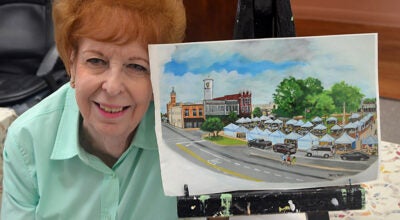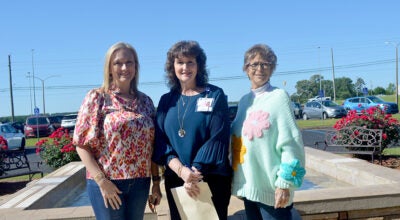Troy BOE moving quickly on capital projects
Published 8:13 am Tuesday, October 4, 2011
Students in the Troy City Schools could see significant changes to the high school and elementary campuses by the start of the 2012-2013 school year.
The Troy City School Board met in a work session Monday to consider architect bids on capital improvements to all campuses. Board members are expected to vote next week on the proposals.
“In order to have the classrooms at the Early Childhood Center ready for the start of school in 2012, we need to move quickly,” Superintendent Lee Hicks told the board members.
Architects from Seay Seay and Litchfield and McKee and Associates both submitted proposals for significant capital projects at the three campuses. The projects call for the construction of approximately 36 new classrooms at the Hank Jones Early Childhood Center, along with the expansion of the cafeteria and a new access road to Butter and Egg Road; the construction of a new cafetorium and conversion of the existing cafeteria to a new media center at Charles Henderson High School; and a massive demolition and renovation at Charles Henderson Middle School.
The additional classrooms at the ECC will be used for a pre-kindergarten program and to move the first and second grades to the ECC.
“This will be a much better educational experience for the kids,” said Dr. Judson Edwards, vice president of the school board. “This is the kind of structural change that will make a better educational experience in the long run.”
The high school cafeteria has long be targeted for improvements and upgrades. “It’s just a matter of time until we have to do something,” Hicks said.
By adding a cafeteria and multi-purpose room with a performing arts stage, the school will have a more functional facility, he said.
And, at the middle school, poor design and outdated buildings are prompting the need for a significant renovation. “We’re not talking about just changing a few walls,” Hicks said. “I think the last building that was added was the science lab in 1996 and before that all the buildings were built in the 1970s.”
The capital improvements would be funded by the proceeds a $15 million bond issue. The district secured the funding in the spring as part of a debt restructuring process.
Hicks said the architects offered proposals on each of the three projects separately, so the disrict has the option of choosing to work with one firm or to split among the firms depending on the lowest cost for each project.
Hicks said his plan is to complete the ECC and high school projects during the 2011-2012 school year. “At the start of next year, we’ll move the sixth grade down to the elementary school and, likely, the seventh- and eighth-graders to the high school for the year, while we understake the middle school renovations,” he said. “It will be difficult, but I think the parents, teachers and students will understand if they have something to look forward to … the architects have told us we should be able to be in the middle school by the fall of 2013.”
Despite the availability of the $15 million in capital funds, board members raised concerns about the district’s ability to repay the bonds and handle the additional debt payments once the funds are spent.
Debt service would double from approximately $750,000 in FYE11 to approximately $1.484 million by FYE15, said Mickey Daughtry, CFO of the disrict. “By 2020, if nothing changes significantly from our current projections, you willb ein the hole, meaning you will have exhausted the reserve and your debt service and expenses will exceed revenues,” Daughtry said.
Roxie Kitchens, board president, urged members to consider carefully the long-term impact of the district’s investment. “I just want to make sure everyone is aware of that,” she said.





